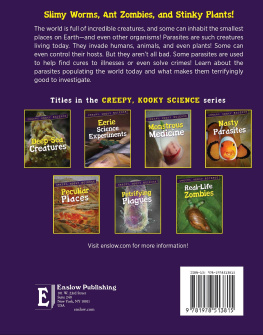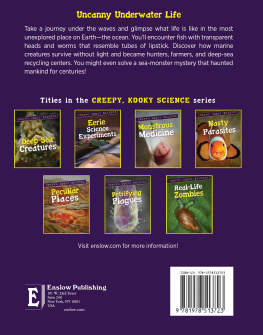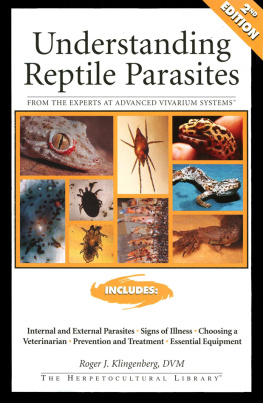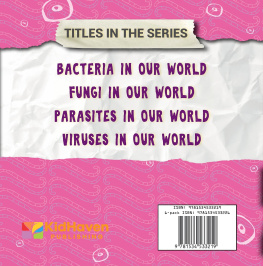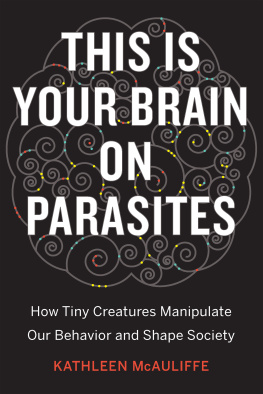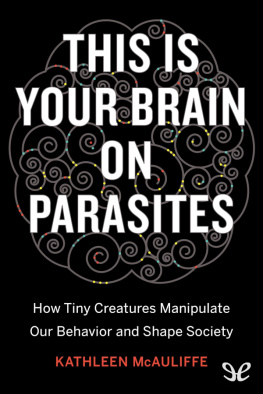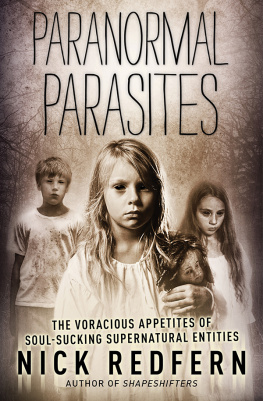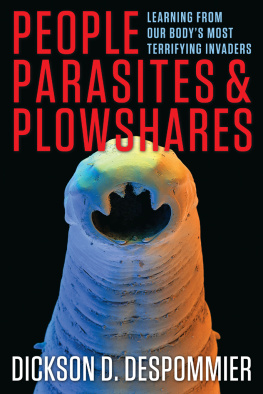
Published in 2020 by Enslow Publishing, LLC
101 W. 23rd Street, Suite 240, New York, NY 10011
Copyright 2020 by Enslow Publishing, LLC
All rights reserved.
No part of this book may be reproduced by any means without the written permission of the publisher.
Library of Congress Cataloging-in-Publication Data
Names: Troup, Roxanne, author.
Title: Nasty parasites / Roxanne Troup.
Description: New York: Enslow Publishing, 2020. | Series: Creepy, kooky science | Audience: Grades 5 to 8. | Includes bibliographical references and index.
Identifiers: LCCN 2019009521| ISBN 9781978513815 (library bound) | ISBN 9781978513808 (pbk.)
Subjects: LCSH: ParasitesJuvenile literature. | ParasitismJuvenile literature.
Classification: LCC QL757 .T76 2020 | DDC 577.8/57dc23
LC record available at https://lccn.loc.gov/2019009521
Printed in the United States of America
To Our Readers: We have done our best to make sure all websites in this book were active and appropriate when we went to press. However, the author and the publisher have no control over and assume no liability for the material available on those websites or on any websites they may link to. Any comments or suggestions can be sent by email to .
Photo Credits: Nasty Parasites Photo research by Bruce Donnola
Cover, pp. Richard Chesher/Science Source/Getty Images
Contents
Introduction
E very living thing needs a habitat. Habitats are like homes. They provide living things with the space and ingredients for survival. Habitats supply food and water. They offer shelter and a safe place to raise young. A habitat can be anywhere. It can be any size. It might be as large as a desert. It might be as small as a leaf. The same habitat can be home to many living things. A habitat can even be another living thing!
Panther chameleons live in the rain forests of Madagascar. They make their home in trees. Trees provide the chameleons with insects to eat, a place to rest and hide, and even dew to drink. The tree is a living thing, but it is also the chameleons habitat.
Some living things dont look for habitats. They look for hosts. A host is a living thing that has become a habitat for parasites. Parasites steal nutrients from their hosts to survive. A guinea worm is a parasite. It enters human hosts through dirty drinking water. The worm grows by stealing nutrients from the human. Once mature, it burrows out of a persons leg or foot to release This type of parasite is called an endoparasite. It lives inside the body of its host.
A parasite that lives outside a host is called an ectoparasite. Fleas are ectoparasites. They live on the bodies of furry or feathery animals. A rabbit flea jumps into the soft fur of its host. Its spiky body tangles in the rabbits coat. The flea bites the rabbit with its needle-like mouth.
There are millions of different kinds of parasites. Some are dangerous to their hosts. They may spread disease or cause terrible pain. Other parasites arent dangerous. A host might not even realize they are sharing space with a parasite!
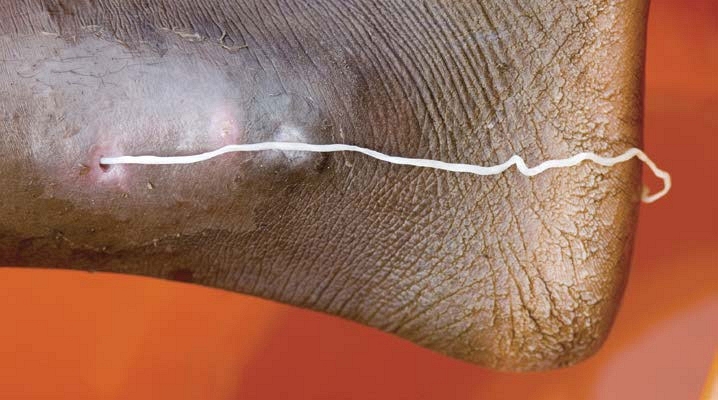
A guinea worm crawls out of a patients foot in Ghana. Guinea worms were once common in Africa. But thanks to global efforts in providing clean drinking water, the number of infections has dropped significantly.
Some parasites spend their entire life cycle in the body of one host. Others move from host to host. Some parasites start life in one host, live free for a time, and then find another host where they can mature and reproduce. Parasites are master adapters. When they find a host that meets their needs, they develop specialized ways to stay with that host. They use hooks to hang on tight. They hide by changing shape as they mature. They learn to resist medicines. They may even control host behavior to help with reproduction.
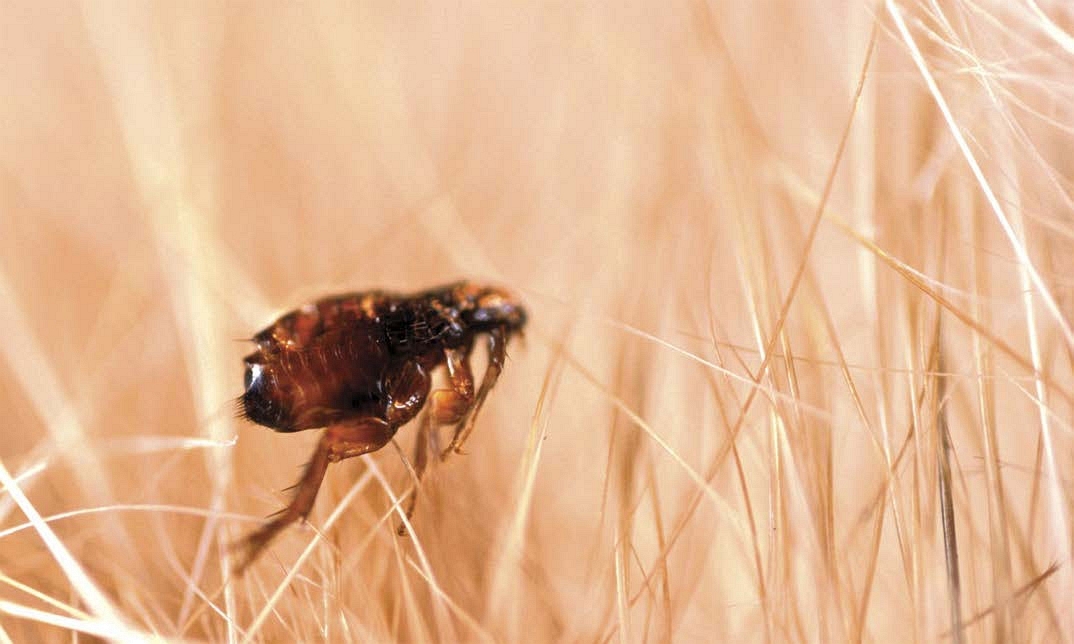
A tiny cat flea crawls through the hairs of its preferred host. Unless the cat is treated, the flea will hide there for three months feeding and laying up to fifty eggs a day!
Parasites can be nasty creatures. And they are everywhere. Plants can be parasites. Animals can be, too. Even fungi or bacteria can be parasitic. But not all parasites are bad. As scientists learn more about parasites, they are also discovering ways parasites can help. Gardeners use parasites to control insect populations. Farmers put parasites to work protecting crops. Doctors use parasites to help heal wounds. Experts have even started using parasites to solve ancient mysteries and crimes!
CHAPTER 1
Nasty Nuisances
P arasites have been a part of human history since time began. There are more than four hundred and thirty different parasites that search out human hosts. Some of those parasites go completely unnoticed. Others make humans very sick.
In 1812, French emperor Napoleon Bonaparte (17691821) controlled most of Europe. But Napoleon also wanted to control India. The only way into India was through Russia. So that summer, Napoleon ordered his forces to march toward Moscow. On their way, the army ran out of supplies. Men ate what they could find. They hunted. They stole. They caught lice.
Lice are parasites that suck human blood. They can live in hair or on unwashed clothes. Lice also spread diseases such as typhus. Typhus is deadly. It causes high fevers and rashes. It is also highly contagious. Typhus spreads easily in crowded, dirty environments. In the first month of Napoleons march, eighty thousand of his men died of typhus and dysentery. Dysentery is another disease caused by parasites. It, too, spreads in crowded, dirty environments.
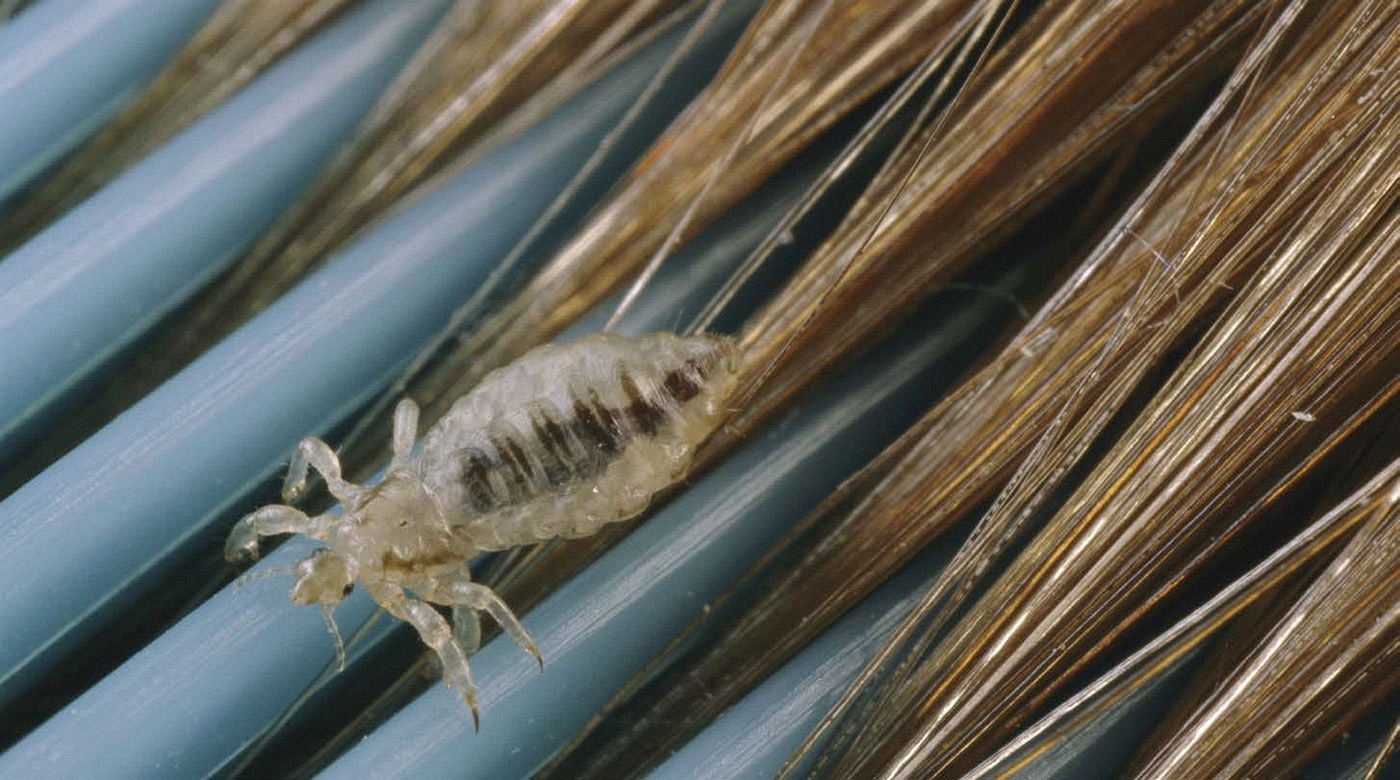
To treat lice, a person has to wash their hair with a special shampoo or lotion, and then comb the lice and their eggs out.
Things are a little different now. Though parasites can still be deadly to humans, modern hygiene practices have made most only nasty nuisances.
Itchy Mites
Many parasites that use humans as hosts rely on blood to survive. But human blood is hard to get. Most of it is buried deep within the body. Only a small amount of blood travels close to the surface.
That blood is protected by a thick, flexible shell of skin. How do parasites get to their food source? Some find a way deep into the human bodyoften through the stomach. Others pierce human skin to expose the tiny blood vessels underneath it.
To pierce skin, parasites need special mouthpieces. These mouthpieces are usually long and sharp. They poke through skin like a needle. When the body recognizes that it has been invaded, it turns on protector cells. These cells release a chemical called histamine. Histamine pushes out invaders and calls for repair cells to patch the break. They also make skin feel itchy.
Mite bites often cause an itchy reaction in humans. Mites are ectoparasites. They are related to spiders. The chigger mite is common in warm, moist climates. It is known for its red body and itchy bites. But adult chiggers dont bite. They live in the soil and eat insects and mosquito eggs. Their babies bite.
Parasitic Crime Fighters
Many parasites are specialized. They live only in specific environments. They only feed on certain hosts. This allows experts to track parasites and use them to solve crimes. Once while searching a crime scene in California, investigators were bitten by chiggers. That gave the police an idea. What if the suspect was also bitten? Could that prove his guilt? Police called in the experts. They discovered that the only place chiggers lived in their area was at the crime scene. When police saw bites covering the suspects body, it proved hed been there. They sent him to jail.
Next page
